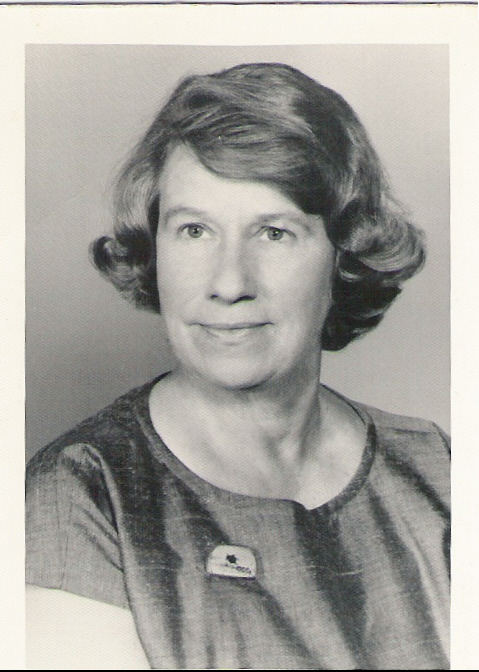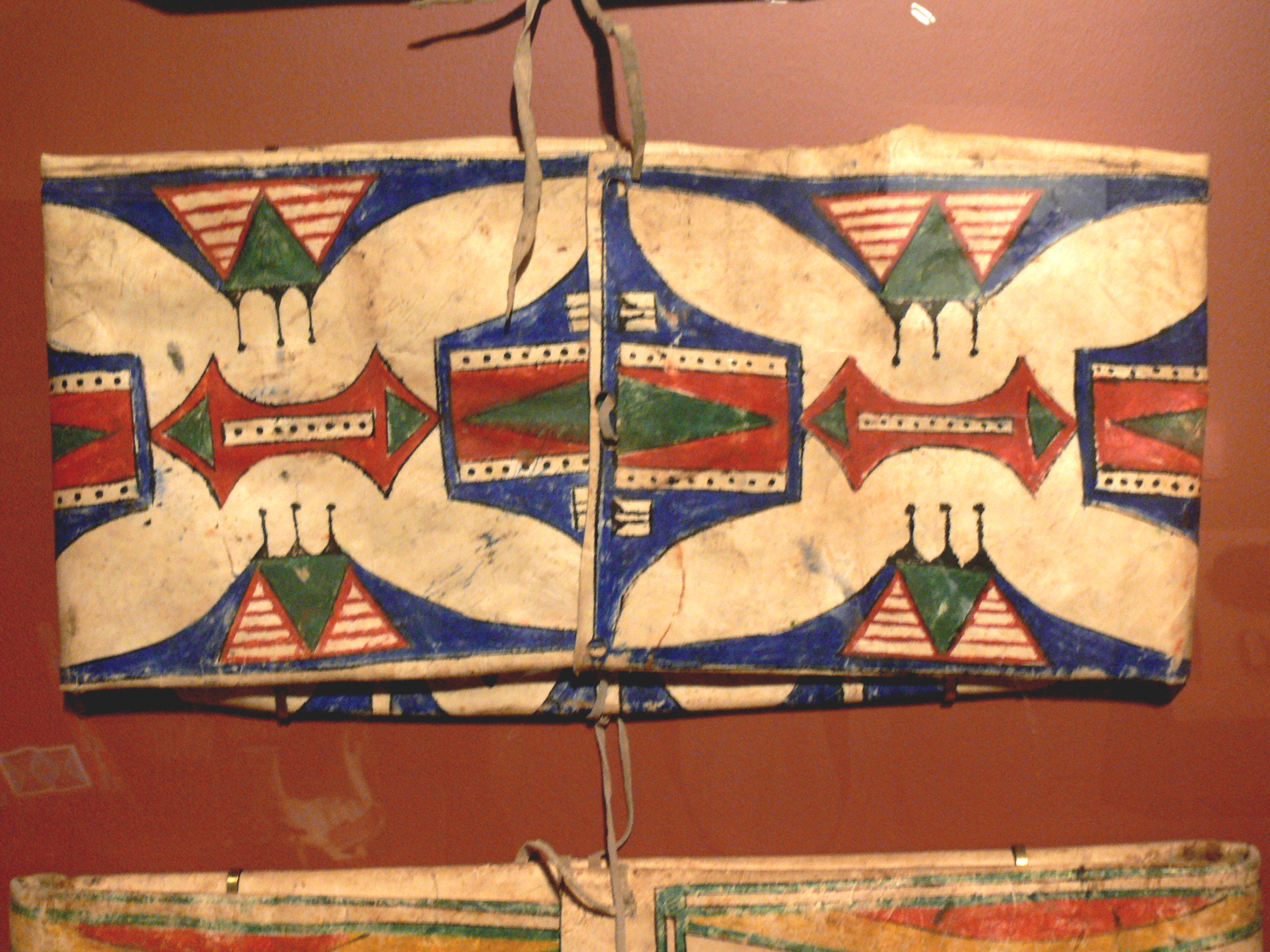|
Dorothy Dunn
Dorothy Dunn Kramer (December 2, 1903 – July 5, 1992) was an American art instructor who created The Studio School at the Santa Fe Indian School. Background Dunn was born on 2 December 1903 in Pottawatomie County, Kansas and educated in Chicago. She first encountered Native American art at the Field Museum in Chicago in 1925.Bernstein and Rushing, 5 In 1928, Dunn traveled to New Mexico for the first time, where she taught second grade at the Santo Domingo Pueblo Day School, located south of Santa Fe. She learned quickly from her young Pueblo students that many features of their culture were taboo to draw or paint. In 1930, she moved to Shiprock, New Mexico to teach at the San Juan Boarding School at the Northern Navajo Agency. She finally returned to Chicago in 1931 to complete her degree at the School of the Art Institute of Chicago.Bernstein and Rushing, 9 The Studio School While completing her degree, Dunn outlined plans to teach art in the Civil Service at the Santa F ... [...More Info...] [...Related Items...] OR: [Wikipedia] [Google] [Baidu] |
Oscar Howe
Oscar Howe (''Mazuha Hokshina'' or "Trader Boy", May 13, 1915 – October 7, 1983) was a Yanktonai Dakota artist from South Dakota, who became well known for his casein and tempera paintings.Libhart, Myles and Vincent Price. ''Contemporary Sioux Painting.'' University States Department of the Interior, 1970:48-51. He is credited with influencing contemporary Native American art, paving the way for future artists.White, Mark Andrew. “Oscar Howe and the Transformation of Native American Art,” ''American Indian Art Magazine'' 23, no. 1 (Winter 1997): 36-43. His art style is marked by bright color, dynamic motion and pristine lines.'Oscar Howe Biograph'y , South Dakota State University Early life and education Oscar Howe was born in 1915 in |
Rock Art
In archaeology, rock art is human-made markings placed on natural surfaces, typically vertical stone surfaces. A high proportion of surviving historic and prehistoric rock art is found in caves or partly enclosed rock shelters; this type also may be called cave art or parietal art. A global phenomenon, rock art is found in many culturally diverse regions of the world. It has been produced in many contexts throughout human history. In terms of technique, the four main groups are: * cave paintings, * petroglyphs, which are carved or scratched into the rock surface, * sculpted rock reliefs, and * geoglyphs, which are formed on the ground. The oldest known rock art dates from the Upper Palaeolithic period, having been found in Europe, Australia, Asia, and Africa. Anthropologists studying these artworks believe that they likely had magico-religious significance. The archaeological sub-discipline of rock art studies first developed in the late-19th century among Francophone scholar ... [...More Info...] [...Related Items...] OR: [Wikipedia] [Google] [Baidu] |
Plains Hide Painting
Plains hide painting is a traditional Plains Indian artistic practice of painting on either tanned or raw animal hides. Tipis, tipi liners, shields, parfleches, robes, clothing, drums, and winter counts could all be painted. Genres Art historian Joyce Szabo writes that Plains artists were concerned "with composition, balance, symmetry, and variety." Designs can be similar to those found in earlier rock art and later quillwork and beadwork. Geometric painting Plains women traditionally paint abstract, geometric designs.Szabo, 5"More About Buffalo Hide Painting." ''National Museum of American History''. (retrieved 4 Feb 2010) Bright colors were preferred and areas were filled with solid fields of color. Cross-hatc ... [...More Info...] [...Related Items...] OR: [Wikipedia] [Google] [Baidu] |
Mural
A mural is any piece of graphic artwork that is painted or applied directly to a wall, ceiling or other permanent substrate. Mural techniques include fresco, mosaic, graffiti and marouflage. Word mural in art The word ''mural'' is a Spanish adjective that is used to refer to what is attached to a wall. The term ''mural'' later became a noun. In art, the word mural began to be used at the beginning of the 20th century. In 1906, Dr. Atl issued a manifesto calling for the development of a monumental public art movement in Mexico; he named it in Spanish ''pintura mural'' (English: ''wall painting''). In ancient Roman times, a mural crown was given to the fighter who was first to scale the wall of a besieged town. "Mural" comes from the Latin ''muralis'', meaning "wall painting". History Antique art Murals of sorts date to Upper Paleolithic times such as the cave paintings in the Lubang Jeriji Saléh cave in Borneo (40,000-52,000 BP), Chauvet Cave in Ardèche departmen ... [...More Info...] [...Related Items...] OR: [Wikipedia] [Google] [Baidu] |
Native Americans In The United States
Native Americans, also known as American Indians, First Americans, Indigenous Americans, and other terms, are the Indigenous peoples of the mainland United States ( Indigenous peoples of Hawaii, Alaska and territories of the United States are generally known by other terms). There are 574 federally recognized tribes living within the US, about half of which are associated with Indian reservations. As defined by the United States Census, "Native Americans" are Indigenous tribes that are originally from the contiguous United States, along with Alaska Natives. Indigenous peoples of the United States who are not listed as American Indian or Alaska Native include Native Hawaiians, Samoan Americans, and the Chamorro people. The US Census groups these peoples as " Native Hawaiian and other Pacific Islanders". European colonization of the Americas, which began in 1492, resulted in a precipitous decline in Native American population because of new diseases, wars, ethni ... [...More Info...] [...Related Items...] OR: [Wikipedia] [Google] [Baidu] |
San Ildefonso Pueblo, New Mexico
San Ildefonso Pueblo (Tewa: Pʼohwhogeh Ówîngeh ’òhxʷógè ʔówîŋgè"where the water cuts through" ) is a census-designated place (CDP) in Santa Fe County, New Mexico, United States, and a federally recognized tribe, established c. 1300 C.E. The Pueblo is self-governing and is part of the Santa Fe, New Mexico Metropolitan Statistical Area. The population was 524 as of the 2010 census, reported by the State of New Mexico as 1,524 in 2012, and there were 628 enrolled tribal members reported as of 2012 according to the Department of the Interior. San Ildefonso Pueblo is a member of the Eight Northern Pueblos, and the pueblo people are from the Tewa ethnic group of Native Americans, who speak the Tewa language. Geography San Ildefonso is located at (35.897902, -106.121834). According to the United States Census Bureau, the pueblo has a total area of , of which is land and (5.54%) is water. San Ildefonso Pueblo is located at the foot of Black Mesa. Demographics As ... [...More Info...] [...Related Items...] OR: [Wikipedia] [Google] [Baidu] |
Plains Indians
Plains Indians or Indigenous peoples of the Great Plains and Canadian Prairies are the Native American tribes and First Nation band governments who have historically lived on the Interior Plains (the Great Plains and Canadian Prairies) of North America. While hunting-farming cultures have lived on the Great Plains for centuries prior to European contact, the region is known for the horse cultures that flourished from the 17th century through the late 19th century. Their historic nomadism and armed resistance to domination by the government and military forces of Canada and the United States have made the Plains Indian culture groups an archetype in literature and art for Native Americans everywhere. The Plains tribes are usually divided into two broad classifications which overlap to some degree. The first group became a fully nomadic horse culture during the 18th and 19th centuries, following the vast herds of American bison, although some tribes occasionally engaged in ag ... [...More Info...] [...Related Items...] OR: [Wikipedia] [Google] [Baidu] |
Puebloan Peoples
The Puebloans or Pueblo peoples, are Native Americans in the Southwestern United States who share common agricultural, material, and religious practices. Currently 100 pueblos are actively inhabited, among which Taos, San Ildefonso, Acoma, Zuni, and Hopi are the best-known. Pueblo people speak languages from four different language families, and each Pueblo is further divided culturally by kinship systems and agricultural practices, although all cultivate varieties of maize. Pueblo peoples have lived in the American Southwest for millennia and descend from Ancestral Pueblo peoples. The term ''Anasazi'' is sometimes used to refer to ancestral Pueblo people but it is now largely minimized. ''Anasazi'' is a Navajo word that means ''Ancient Ones'' or ''Ancient Enemy'', hence Pueblo peoples' rejection of it (see exonym). ''Pueblo'' is a Spanish term for "village." When Spaniards entered the area, beginning in the 16th-century with the founding of Nuevo México, they came across ... [...More Info...] [...Related Items...] OR: [Wikipedia] [Google] [Baidu] |
Ho-Chunk
The Ho-Chunk, also known as Hoocągra or Winnebago (referred to as ''Hotúŋe'' in the neighboring indigenous Iowa-Otoe language), are a Siouan-speaking Native American people whose historic territory includes parts of Wisconsin, Minnesota, Iowa, and Illinois. Today, Ho-Chunk people are enrolled in two federally recognized tribes, the Ho-Chunk Nation of Wisconsin and the Winnebago Tribe of Nebraska. The Winnebago Tribe of Nebraska have an Indian reservation in Nebraska. While related, the two tribes are distinct federally recognized sovereign nations and peoples, each having its own constitutionally formed government and completely separate governing and business interests. Since the late 20th century, both tribal councils have authorized the development of casinos. The Ho-Chunk Nation is working on language restoration and has developed a Hoocąk-language iOS app. Since 1988, it has pursued a claim to the Badger Army Ammunition Plant as traditional territory; the area has si ... [...More Info...] [...Related Items...] OR: [Wikipedia] [Google] [Baidu] |
Angel De Cora
Angel De Cora Dietz (1871–1919) was a Winnebago painter, illustrator, Native American rights advocate, and teacher at Carlisle Indian School. She was a well-known Native American artist before World War I. Background Angel De Cora Dietz or Hinook-Mahiwi-Kalinaka (Fleecy Cloud Floating in Place), was born at the Winnebago Agency in Dakota County (now Thurston), Nebraska, on May 3, the daughter of David Tall Decora, a Ho-Chunk (Winnebago) of French ancestry and a son of the Little Decorah, a hereditary chief. Angel was born into the Thunderbird clan; her English and Ho-Chunk names were chosen by a relative who was asked to name her, opened the Bible, and the word "angel" caught her eye. Her mother was a member of the influential LaMere family. She was kidnapped at a young age from the Agency, and sent to school in Hampton, Virginia. She would go on to describe how it happened as follows; "A strange white man appeared on the reservation and asked her, through an interpreter, if s ... [...More Info...] [...Related Items...] OR: [Wikipedia] [Google] [Baidu] |
Institute Of American Indian Arts
The Institute of American Indian Arts (IAIA) is a public tribal land-grant college in Santa Fe, New Mexico. The college focuses on Native American art. It operates the Museum of Contemporary Native Arts (MoCNA), which is housed in the historic Santa Fe Federal Building (the old Post Office), a landmark Pueblo Revival building listed on the National Register of Historic Places as Federal Building. The museum houses the National Collection of Contemporary Indian Art, with more than 7,000 items. History The Institute of American Indian Arts was co-founded by Lloyd Kiva New (Cherokee, 1916–2002) and Dr. George Boyce in 1962 with funding from the Bureau of Indian Affairs. The school was founded upon the recommendation of the BIA Department of Education and the Indian Arts and Crafts Board. Three factors led to the school's founding: growing dissatisfaction with the academic program at the Santa Fe Indian School, the BIA's emerging interest in higher education, and the influence of t ... [...More Info...] [...Related Items...] OR: [Wikipedia] [Google] [Baidu] |








